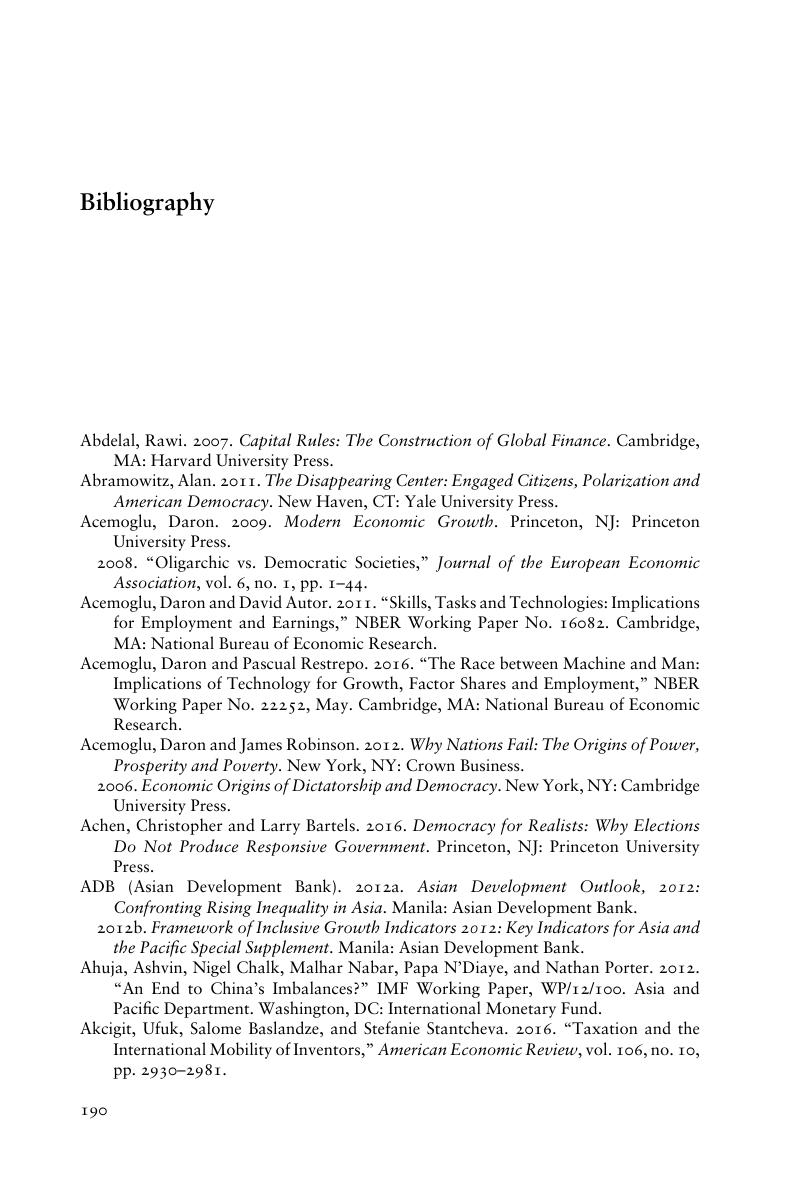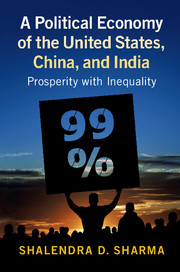Book contents
- A Political Economy of the United States, China, and India
- A Political Economy of the United States, China, and India
- Copyright page
- Contents
- Figures
- Tables
- Preface
- Acknowledgments
- 1 Introduction: Prosperity with Inequality in the Age of Globalization
- 2 Widening Income and Wealth Gap in the United States
- 3 Rising Prosperity and Widening Inequality in the People’s Republic of China
- 4 Democracy, Prosperity, and Inequality in India
- 5 Prosperity with Equality: Future Directions
- Notes
- Bibliography
- Index
- References
Bibliography
Published online by Cambridge University Press: 16 May 2018
- A Political Economy of the United States, China, and India
- A Political Economy of the United States, China, and India
- Copyright page
- Contents
- Figures
- Tables
- Preface
- Acknowledgments
- 1 Introduction: Prosperity with Inequality in the Age of Globalization
- 2 Widening Income and Wealth Gap in the United States
- 3 Rising Prosperity and Widening Inequality in the People’s Republic of China
- 4 Democracy, Prosperity, and Inequality in India
- 5 Prosperity with Equality: Future Directions
- Notes
- Bibliography
- Index
- References
Summary

- Type
- Chapter
- Information
- A Political Economy of the United States, China, and IndiaProsperity with Inequality, pp. 190 - 210Publisher: Cambridge University PressPrint publication year: 2018



